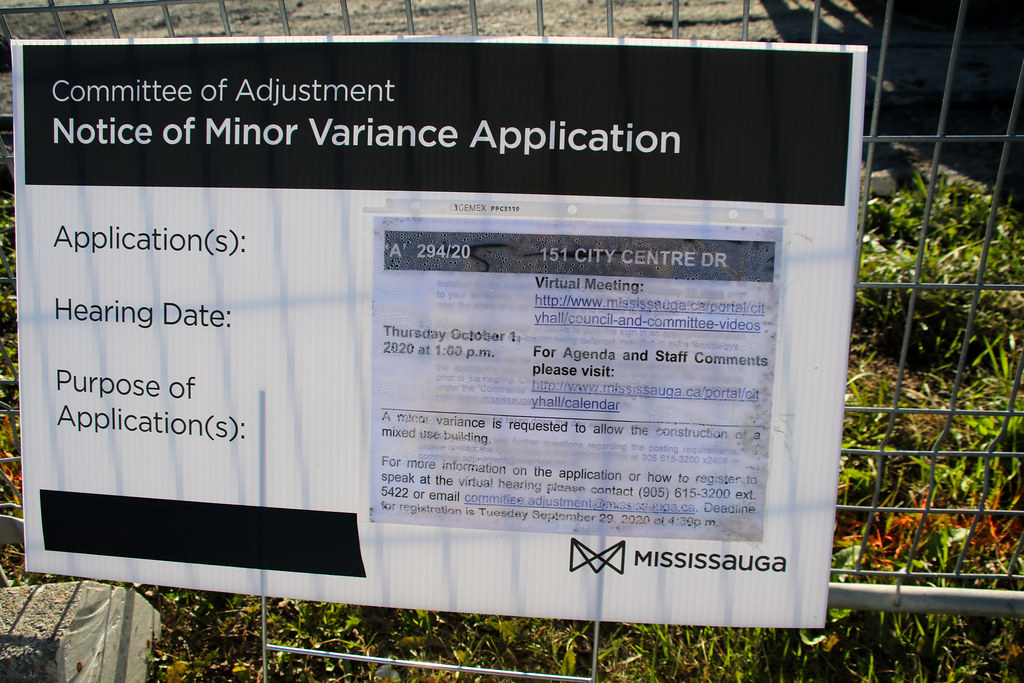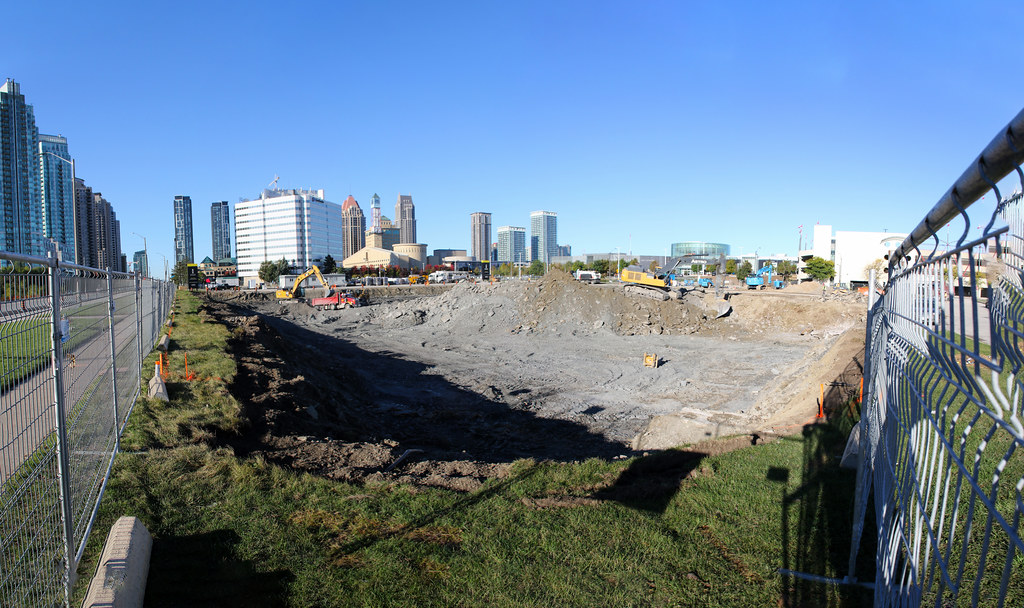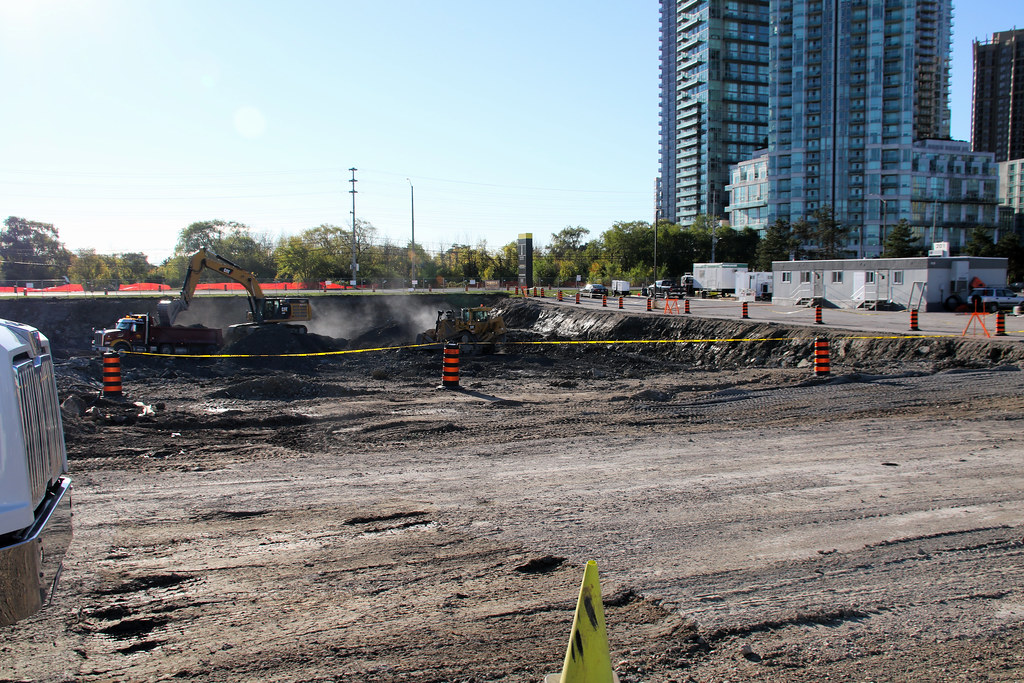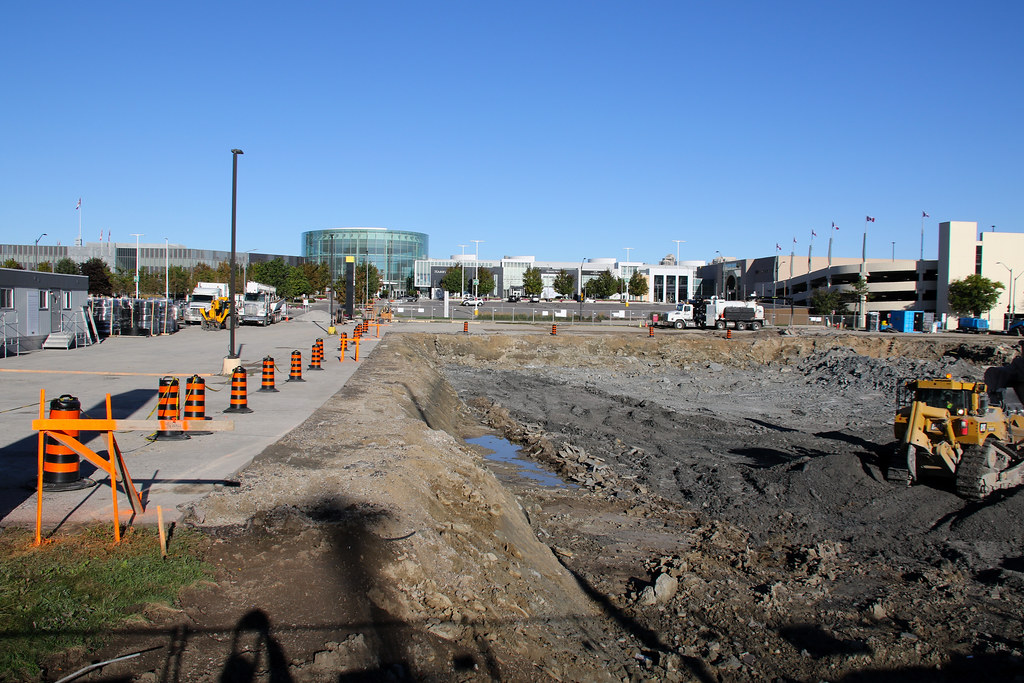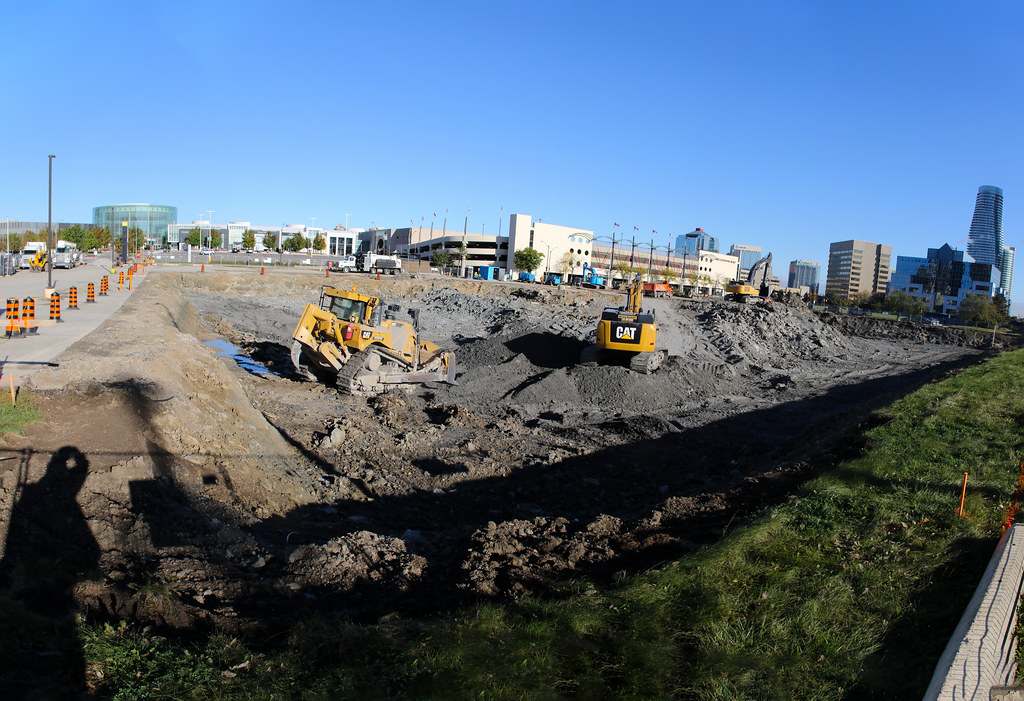The ability to excavate is limited by the nature of geology itself. There are two different types of layers we would be concerned with here - bedrock and regolith. Bedrock is most easily described as solid rock that has been compacted over millions of years, where porosity has been destroyed and fluids pushed out. Regolith is the soils that sit on top, which still retains moisture and porosity, as well as not being fully consolidated to the point of being considered truly solid. In the case of the GTA, the bedrock is composed of shale, which is highly fissile, meaning it has a tendency to split on its planes of stratification, causing it to break apart into small, flat pieces quite easily when being excavated. Essentially, most of the excavation is the removal of dirt and small pieces. You really can't do that more efficiently and more cost-effectively than using excavators and other manual equipment.
However, it is absolutely possible to cut certain types of bedrock into neat blocks. Limestone and granite are much stronger rocks that can be cut like this, but you only really see it in quarries where the rock is actively being mined. For dense granite or limestone that needs to be removed for construction, it is typically removed through blasting, because it is much faster and cheaper.
